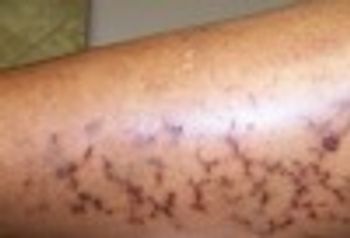
This 66-year-old black woman presented with a 2-year history of a painless skin eruption. She stated that her skin had “changed overnight” while she was caring for her mother who had been hospitalized.

This 66-year-old black woman presented with a 2-year history of a painless skin eruption. She stated that her skin had “changed overnight” while she was caring for her mother who had been hospitalized.

Telltale skin lesions of syphilis, gonorrhea, human papillomavirus infection, and Haemophilus ducreyi infection.
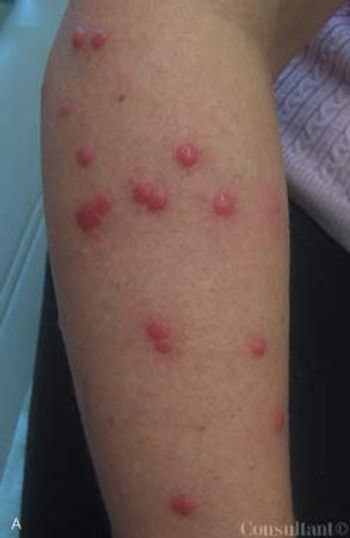
A 34-year-old woman presented with a blistering, intensely pruritic rash that had erupted 3 days earlier. Multiple papular lesions were densely clustered on areas of exposed skin. Excoriations were present, but there was no evidence of bacterial infection.

For 6 years, a 32-year-old man had a recurring rash on his back, shoulders, and chest. He stated that the rash appears in the spring, itches, and enlarges into ringlike areas. Previously, when treated with cephalexin, the rash had cleared within several weeks. Antifungal medication (econazole cream and oral terbinafine) had failed to resolve the rash.
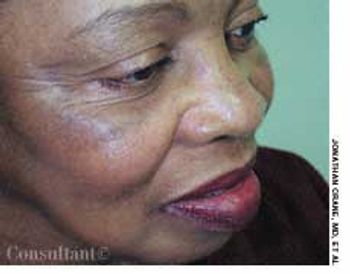
A 58-year-old black woman sought evaluation of areas of increased pigmentation on her cheeks that had been present for many years. Bleaching agents did not lighten the area; new, non–nickel-containing eyeglass frames had no effect. A 3-week course of halobetasol cream failed to fade the hyperpigmentation.
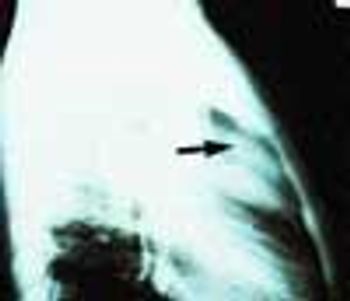
A 72-year-old woman who had fallen and injured the left side of her chest came to the emergency department complaining of pain in that area. She was physically stable and not short of breath. A soft systolic murmur was heard over the left precordium; the lungs were clear. A posteroanterior chest film showed no rib fracture but it did show an enlarged heart and a large, calcified ventricular aneurysm.
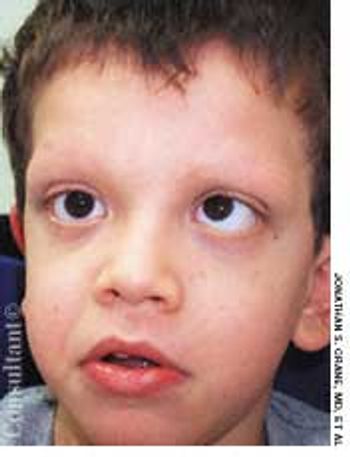
The mother of a 7-year-old boy with cardiofaciocutaneous syndrome sought treatment for the cutaneous aspects of her son's disease. Dry skin and keratosis pilaris of the upper outer arms were noted.

Mongolian spots are benign, congenital blue-gray macules or patches commonly found in Asian, black, and Hispanic infants (and in 5% of white infants). They are most often located in the sacrogluteal area and the upper back. The lesions may be solitary or multiple, vary in color intensity, and frequently enlarge until about age 2, when they gradually fade and disappear. Approximately 5% persist into adulthood.
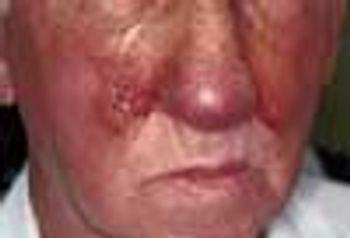
The patient reported that he had noticed the facial eruption a couple of months earlier. On examination, the lesion appeared more plaque-like and dense than is typical of rosacea. The differential diagnosis included lupus, mycosis fungoides, rosacea, and angiosarcoma.

A 5-day history of pain and swelling in the right third finger (A) were the complaints of a 76-year-old man. A few days earlier, another physician had prescribed indomethacin, 25 mg tid, but it had not helped, and the patient believed that his condition had worsened. He had had an attack of gout 5 years before but had not been taking any maintenance medication. The distal interphalangeal (DIP) joint of the affected finger was now erythematous and tender, with chalky subcutaneous deposits. A diagnosis of acute gouty arthritis and gouty tophus was made.

Three days after having eaten fish, a 66-year-old woman with a known allergy to fish and a history of schizophrenia was brought to the emergency department because of macroglossia--a presentation of anaphylaxis.

Swelling of the lower legs broughtthis 57-year-old woman to a familypractice clinic. She had a history ofhyperthyroidism with weight loss,tachycardia, and anxiety. This conditionwas confirmed with blood testsand radioactive iodine uptake testing.

A 62-year-old woman sought medicalevaluation for persistent swellingof her lower lip and right cheek. Thecondition had been present for 8 to9 months. A 6-month course of oralprednisone prescribed by anotherpractitioner had no effect. The patienthad no history of chronic diseaseand no pain, paralysis, ulcerations,scaling, or dental or tongue problems.
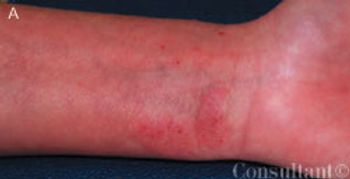
For 5 years, a 54-year-old woman had been bothered by an intermittent dermatitis on her left hand and wrist. The rash had remained constant during the past year. The patient, a hairdresser, usually wears gloves when she works. Moderate erythema and flaking were noted on her hands.

Syndrome The mother of a 7-year-old boy with cardiofaciocutaneous syndrome sought treatment for the cutaneous aspects of her son’s disease. Dry skin and keratosis pilaris of the upper outer arms were noted. Cardiofaciocutaneous syndrome- a rare autosomal dominant genetic disorder-had been diagnosed when the child was 3 years old.

Published: September 14th 2005 | Updated:

Published: September 14th 2005 | Updated:

Published: September 14th 2005 | Updated:
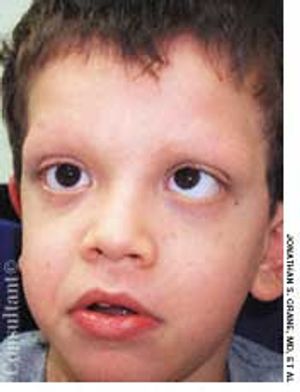
Published: September 14th 2005 | Updated:
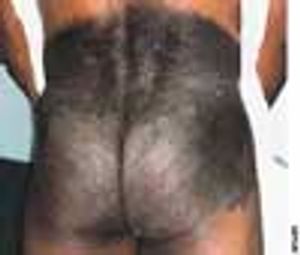
Published: September 14th 2005 | Updated:

Published: May 1st 2002 | Updated: